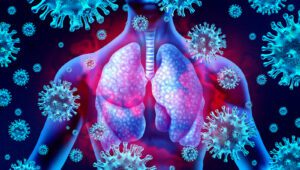World Pneumonia Day, which is observed on November 12, is dedicated to increasing public awareness about pneumonia and the prevention, treatment, and management of the disease. Most frequently brought on by a number of bacteria and viruses, pneumonia is an infectious respiratory illness that results in the inflammation of the air sacs in one or both lungs. Symptoms include chest pain, coughing, fever, breathlessness, and a high temperature. Even though pneumonia can affect anyone, it can be especially dangerous for infants, older adults (65 years or older), people with other serious medical conditions, and those with compromised immune systems. If not diagnosed and treated promptly, it may be fatal.
Approximately 50 to 60 percent of pneumonia cases are caused by Streptococcus pneumoniae (pneumococcus), a bacterium that can live in the throat and nose without causing any symptoms but will sometimes invade the lungs and cause an infection.
During influenza season, acute respiratory illnesses like pneumonia may be hard to differentiate from influenza, leading to delayed diagnosis and treatment, which in cases like pneumonia could be fatal. Diagnostic programmes to detect both pneumonia and other respiratory infections would be useful for public health surveillance, treatment, and prevention.
At the height of the Covid-19 pandemic, The SMASS (Swiss Medical Assessment System) COVID Guide web application was developed to aid the public in rapid COVID-19 self-assessments and advise the users on the appropriate measures to take based on their responses to the questions posed by the application. In March 2020, IntelliSOFT Consulting Ltd, in collaboration with a consortium of partners consisting of Evaplan, In4medicine, aQua Institute and University of Nairobi adapted the SMASS COVID Guide tool for the Kenyan landscape and dubbed it Afya Guide. The SMASS (Structured Medical Assessment System) Afya Guide is an online symptom-checker whose goal is to assist the public to carry out self-assessment for flu-like symptoms It can be used by both the general public and medical professionals as a rapid screening assessment of flu-like symptoms, thus promoting access to quality and timely healthcare services to users.
Afya Guide is driven by neural network technology, which allows computers to process data in a way that mimics the human brain, learning from vast amounts of data and making decisions in a human-like manner. The nodes in the neural network have been trained on data from medical studies and evidence covering thousands of diagnoses. By identifying the underlying relationships in the input data, the model can accurately relate the symptoms of an Afya Guide user to the correct diagnosis. For illnesses like pneumonia, such a tool is highly valuable as it allows users to get timely and adequate medical care thus preventing death.

0 Comments